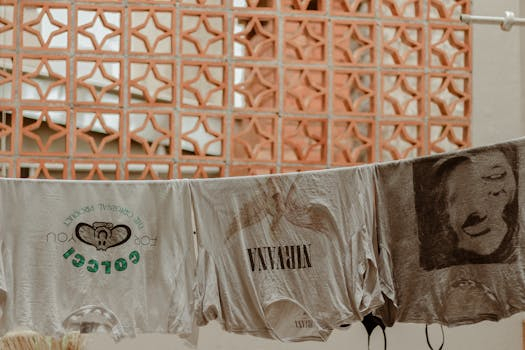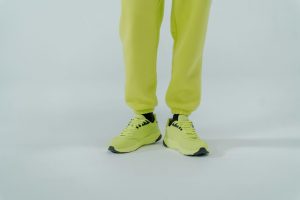Biodegradable Fabrics: The Future of Eco-Friendly Fashion
Fashion has always been an ever-evolving industry, constantly introducing new trends and designs. But as our society becomes increasingly aware of the impact of our actions on the environment, the fashion industry has also started to make a shift towards more sustainable and eco-friendly practices. One of the most promising developments in this area is the use of biodegradable fabrics in fashion. These fabrics not only offer a sustainable alternative to traditional fabrics but also hold the potential to reduce the carbon footprint of the fashion industry. In this article, we will explore the concept of biodegradable fabrics and how they are paving the way for a more eco-friendly future of fashion.
The Problem with Traditional Fabrics
Before we dive into the world of biodegradable fabrics, let’s first understand why there is a need for sustainable alternatives in the fashion industry. Traditional fabrics, such as cotton, polyester, and nylon, are derived from non-renewable resources and require a significant amount of resources, chemicals, and water to produce. This not only puts a strain on the environment but also contributes to pollution and waste generation. In addition, these fabrics are not biodegradable, meaning they take hundreds of years to decompose, adding to the already mounting global waste problem. This is where biodegradable fabrics come in as a viable solution.
What are Biodegradable Fabrics?
Biodegradable fabrics are materials that can break down and decompose naturally without causing harm to the environment. They are made from natural materials such as plant-based fibers or renewable resources like wood pulp. These fabrics are designed to decompose within a relatively short period of time, usually within a few months to a few years, depending on the material and conditions. This is in stark contrast to traditional fabrics that can take hundreds of years to decompose, if at all.
Natural Biodegradable Fabrics
One of the most common natural biodegradable fabrics is organic cotton. Unlike conventional cotton, which requires large amounts of water and chemicals to grow, organic cotton is grown without the use of harmful pesticides and insecticides. This not only makes it better for the environment but also for the health of farmers and workers in the cotton industry. Another popular natural fabric is bamboo, which is known for its rapid growth and minimal need for resources. It is also naturally antibacterial, making it a great option for clothing. Hemp and linen are other natural biodegradable fabrics that are gaining popularity in the fashion industry.
Semi-Synthetic Biodegradable Fabrics
Semi-synthetic, or man-made, biodegradable fabrics are created using natural materials and a chemical process. These fabrics are made from cellulose, a natural component found in plants, and are typically biodegradable within a few years. Some examples of semi-synthetic biodegradable fabrics include Tencel, Modal, and Lyocell, which are all made from wood pulp. These fabrics offer excellent breathability and moisture-wicking properties, making them suitable for activewear and undergarments.
Synthetic Biodegradable Fabrics
Synthetic fabrics, such as polyester and nylon, are known for their durability and functionality. However, they are also major contributors to microplastic pollution, which has proven to be harmful to marine life and the environment. To combat this issue, scientists have developed biodegradable versions of these fabrics, known as biopolymers. These fabrics are made from renewable resources, such as corn or vegetable oils, and break down naturally in the environment without releasing harmful toxins.
The Impact of Biodegradable Fabrics on Sustainability
The use of biodegradable fabrics in fashion has a significant impact on sustainability in multiple ways. Firstly, the production of these fabrics requires fewer resources, such as water and chemicals, as compared to traditional fabrics. This not only reduces the carbon footprint of the fashion industry but also conserves essential resources. Additionally, as these fabrics are biodegradable, they do not contribute to the global waste problem, reducing the amount of textile waste that ends up in landfills. Finally, biodegradable fabrics offer a circular solution, meaning they can be reused or composted, providing a sustainable end to their life cycle.
The Future of Eco-Friendly Fashion
The use of biodegradable fabrics is gaining momentum in the fashion industry, with many brands and designers incorporating them into their collections. The availability of these fabrics is also increasing, making it easier for consumers to make sustainable choices. However, to truly make a significant impact, the entire fashion industry needs to embrace and invest in biodegradable fabrics. This requires a shift in consumer mindset towards environmentally-conscious and sustainable fashion. With the increasing awareness and demand for eco-friendly options, the future of fashion looks promising with biodegradable fabrics at the forefront.
The Bottom Line
The use of biodegradable fabrics in fashion offers a sustainable and eco-friendly alternative to traditional fabrics. Not only do these fabrics use fewer resources, but they also have the potential to reduce the environmental impact of the fashion industry. As consumers, we play a crucial role in driving the demand for sustainable fashion, and choosing biodegradable fabrics is a step towards a more environmentally-friendly future. So, next time you go shopping, consider opting for biodegradable fabrics and make a positive impact on the environment and the fashion industry as a whole.










